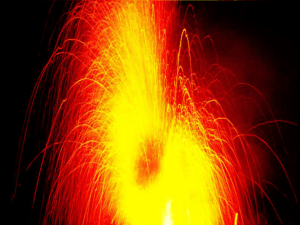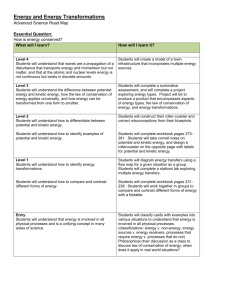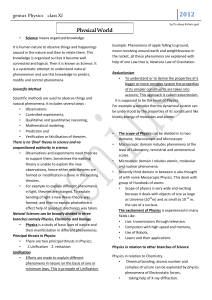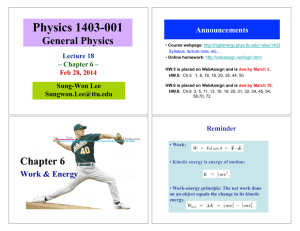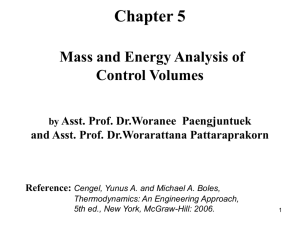The history of thoughta and science
advertisement
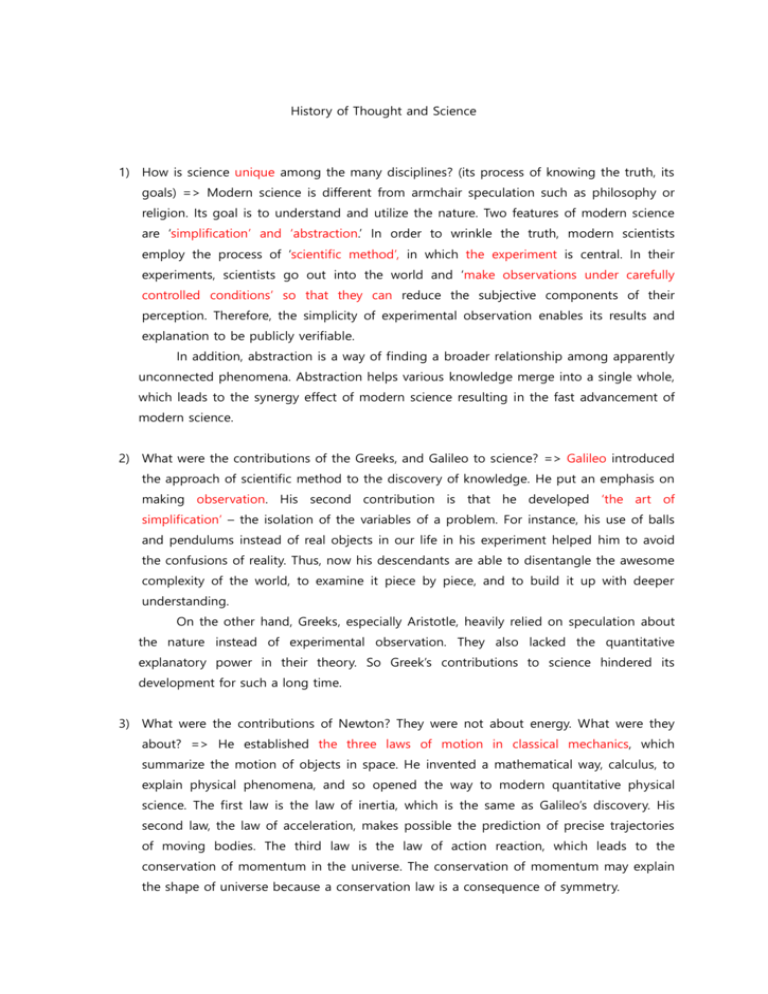
History of Thought and Science 1) How is science unique among the many disciplines? (its process of knowing the truth, its goals) => Modern science is different from armchair speculation such as philosophy or religion. Its goal is to understand and utilize the nature. Two features of modern science are ‘simplification’ and ‘abstraction.’ In order to wrinkle the truth, modern scientists employ the process of ‘scientific method’, in which the experiment is central. In their experiments, scientists go out into the world and ‘make observations under carefully controlled conditions’ so that they can reduce the subjective components of their perception. Therefore, the simplicity of experimental observation enables its results and explanation to be publicly verifiable. In addition, abstraction is a way of finding a broader relationship among apparently unconnected phenomena. Abstraction helps various knowledge merge into a single whole, which leads to the synergy effect of modern science resulting in the fast advancement of modern science. 2) What were the contributions of the Greeks, and Galileo to science? => Galileo introduced the approach of scientific method to the discovery of knowledge. He put an emphasis on making observation. His second contribution is that he developed ‘the art of simplification’ – the isolation of the variables of a problem. For instance, his use of balls and pendulums instead of real objects in our life in his experiment helped him to avoid the confusions of reality. Thus, now his descendants are able to disentangle the awesome complexity of the world, to examine it piece by piece, and to build it up with deeper understanding. On the other hand, Greeks, especially Aristotle, heavily relied on speculation about the nature instead of experimental observation. They also lacked the quantitative explanatory power in their theory. So Greek’s contributions to science hindered its development for such a long time. 3) What were the contributions of Newton? They were not about energy. What were they about? => He established the three laws of motion in classical mechanics, which summarize the motion of objects in space. He invented a mathematical way, calculus, to explain physical phenomena, and so opened the way to modern quantitative physical science. The first law is the law of inertia, which is the same as Galileo’s discovery. His second law, the law of acceleration, makes possible the prediction of precise trajectories of moving bodies. The third law is the law of action reaction, which leads to the conservation of momentum in the universe. The conservation of momentum may explain the shape of universe because a conservation law is a consequence of symmetry. 4) What is energy, who first described it, and what is difficult about heat? => The term energy was used first by Thomas Young in 1807. According to him, energy was the product of the mass or weight of a body into the square of the number expressing its velocity. Energy is the physical quantity that is defined as the capacity to do work. Basically, there are only two kinds of form of energy: kinetic and potential. Kinetic energy is the capacity to do work by virtue of motion; potential energy is the capacity to do work by virtue of position. The exception to the universality of the terms kinetic and potential energy is the energy of electromagnetic radiation. The concept of energy is central to the universe and all the structures and events in it. Energy is the watchful guardian of propriety, ensuring that causality causes only legitimate actions because energy is conserved. Newton’s second law proves the fact that total energy is constant. The conservation of energy is related with the symmetry of spacetime. Heat is energy transferred between two objects as a result of a temperature difference. From a hot object to a cold object, energy is conveyed through atomic or molecular motions. Heat is not the entity but the process in which thermal energy is passed from a point to another point. Thermal energy is the form of kinetic energy of molecules(atoms) in matter. Thus, to understand of phenomena related to heat, the development of quantum mechanics should have proceeded. The transfer of energy as heat is the transfer of energy that stimulates random motion of atoms in the surroundings.


